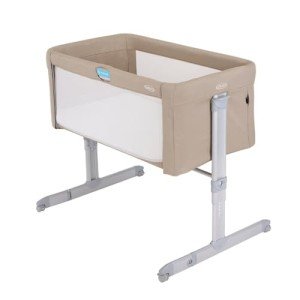The Benefits of Bedside Cribs for Attachment Parenting
Attachment parenting is a child-rearing approach that highlights the significance of forming a strong emotional bond in between a parent and kid. One of the key parts of this method is co-sleeping, which promotes close physical proximity between parents and their infants. Bedside cribs have actually gained considerable appeal as a useful and safe sleeping service that permits parents to practice attachment parenting efficiently. This post looks into the benefits of bedside cribs, their features, and crucial considerations for parents.
What is a Bedside Crib?
A bedside crib, likewise known as a sidecar crib, is a type of infant sleeping arrangement that attaches firmly to the side of a moms and dad's bed. This design permits the baby to oversleep their own different space while preserving easy access for feeding, soothing, and monitoring. Bedside cribs can be found in numerous designs, from easy mesh designs to wood cribs that match the design of the parents' bedroom.
Key Features of Bedside Cribs
When considering a bedside crib, it's important to analyze its features to guarantee it fits the needs of both moms and dad and baby. Here are some important characteristics to keep an eye out for:
| Feature | Description |
|---|---|
| Adjustable Height | Lots of bedside cribs have adjustable height settings to align with the parent's bed mattress. |
| Side Panel Access | A side panel that can be decreased permits easy access to the baby during the night. |
| Tough Construction | Top quality materials, such as solid wood or durable metal frames, offer stability and safety. |
| Safety Features | Search for cribs with safety certifications and functions such as safe and secure latching mechanisms. |
| Breathable Materials | Bedside cribs typically make use of breathable materials to promote air blood circulation, lowering the danger of suffocation. |
Benefits of Bedside Cribs for Attachment Parenting
1. Promotes Bonding
Bedside cribs assist in a nurturing environment where infants can sense their parents' existence, which fosters psychological security and attachment. Bedside Cot For Safe Sleeping helps parents respond more immediately to their baby's needs throughout sleep, promoting a sense of security and trust.
2. Relieve of Feeding
For breastfeeding mothers, bedside cribs provide unequaled benefit for nighttime feeding. Moms can easily reach their baby without rising, making late-night feedings less disruptive for both parent and child.
3. Minimizes Risks Associated with Co-Sleeping
While co-sleeping can promote attachment, it also carries risks such as suffocation and falling. Bedside cribs offer a compromise, supplying a safe sleeping space for the baby while still enabling parents to sleep close by.
4. Better Sleep for Parents
Considering that parents can attend to their baby's requirements without fully waking or leaving the bed, they can maintain better sleep quality. This is especially crucial throughout the early months when sleep deprivation can take a toll on adult wellness.
5. Increased Convenience
With a bedside crib, parents can easily monitor their baby's movements and listen for any nighttime fussing, enabling for quicker interventions when required. This benefit is especially beneficial for parents requiring to handle their time efficiently.
Choosing the Right Bedside Crib
When picking a bedside crib that lines up with the concepts of attachment parenting, parents should think about several aspects:
- Safety Standards: Always select a crib that satisfies security policies and guidelines to ensure the infant's well-being.
- Size Compatibility: Ensure the crib fits firmly beside the parent's bed and can be adjusted for height.
- Reduce of Access: Look for features that permit easy side access, specifically beneficial for breastfeeding.
- Portability: If travel belongs to household life, consider a crib that is light-weight and quickly portable.
- Budget: Bedside cribs come in a range of cost ranges. There are many affordable options that do not jeopardize on security or quality.
Frequently Asked Questions (FAQs)
Q1: Are bedside cribs safe for newborns?A1: Yes, bedside cribs are designed with safety functions to ensure a secure sleeping environment for newborns. Always follow the maker's standards and safety requirements. Q2: Will my baby grow out of a bedside
crib quickly?A2: It depends upon the design. The majority of bedside cribs can accommodate
infants as much as 6-12 months, but it's crucial to inspect the weight and height limits defined by the producer. Q3: Can I use a bedside crib if I have a smaller bed?A3: Yes, many bedside cribs are adjustable and
can be lined up with various bed sizes. Always make sure the attachment is protected. Q4: How does a bedside crib differ from co-sleeping? A4: Co-sleeping includes sharing the same sleep surface area
, while bedside cribs provide a different sleeping
space for the baby, preserving safety and promoting attachment. Q5: Can I use a bedside crib if I'm not breastfeeding?A5: Absolutely! Bedside cribs are helpful for all parents and caretakers, making it simpler
to comfort and participate in to a baby, despite feeding approaches. Bedside cribs represent a vital tool for parents who accept attachment parenting. They not only permit physical closeness however also enhance security and convenience during the newborn stage. Parents should carefully select a bedside crib that adheres to safety standards and fits their way of life, guaranteeing a nurturing environment for both baby and moms and dad. By promoting bonding, ease of feeding, and much better sleep for parents, bedside cribs play a substantial function in fostering the principles of attachment parenting-- a satisfying journey that supports a more powerful, caring connection between parents and their children.

